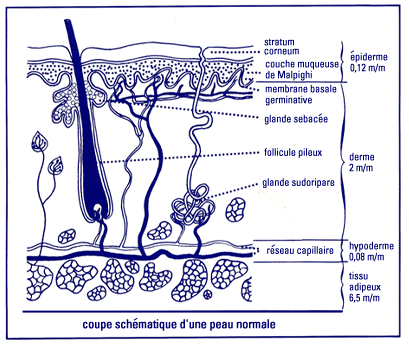
The Skin
The Essentials
The skin, a regenerating organ, is subject to multiple assaults in the workplace. The effects on the skin, described as "Work-Related Skin Disorders", are extremely diverse in their origins and symptoms.
These skin conditions stem from:

The skin, our largest organ in terms of weight and surface area, has natural protective properties, owing principally to the keratin layer. The skin's protective power, while both mechanical and physiochemical, is insufficient to guard effectively against multiple and repeated attacks upon the skin. With increasing growth of the chemical and metal industries and the production of cements, oils, plastics etc., more and more workers require skin protection. Their skin cleansing methods must reinforce the normal protective power of the skin to lessen the occurrence of skin damage and to improve their general work conditions.
Before offering solutions for these situations, we must emphasize that it is essential to teach workers the studied, proven methods for skin cleansing that are geared to their specific workplace.
In fact, numerous reports show that many cleaning products currently in use are responsible for certain skin conditions.
Workers who are exposed to strong or tenacious soiling agents may overclean their skin, by using brushes that are too rough, solvents that eliminate the lipidic barrier, and soaps that are too alkaline and that leave the skin vulnerable, having destroyed the normal pH level. Repeated aggressive cleansing several times a day leads to skin irritation, damage, and eventual infection that, in turn, can bring on more serious and enduring skin conditions.
To reduce the intensity of these harmful cleansing routines, the actual soiling of the hands must be prevented before it occurs by using an effective protective product -- a product that eliminates the assaults on the skin by the products handled at work.
If you are interested in additional information, we have at your disposal:

Copyright © Laboratoire de Protection et d'Hygiene Industrielle (LAPHI).